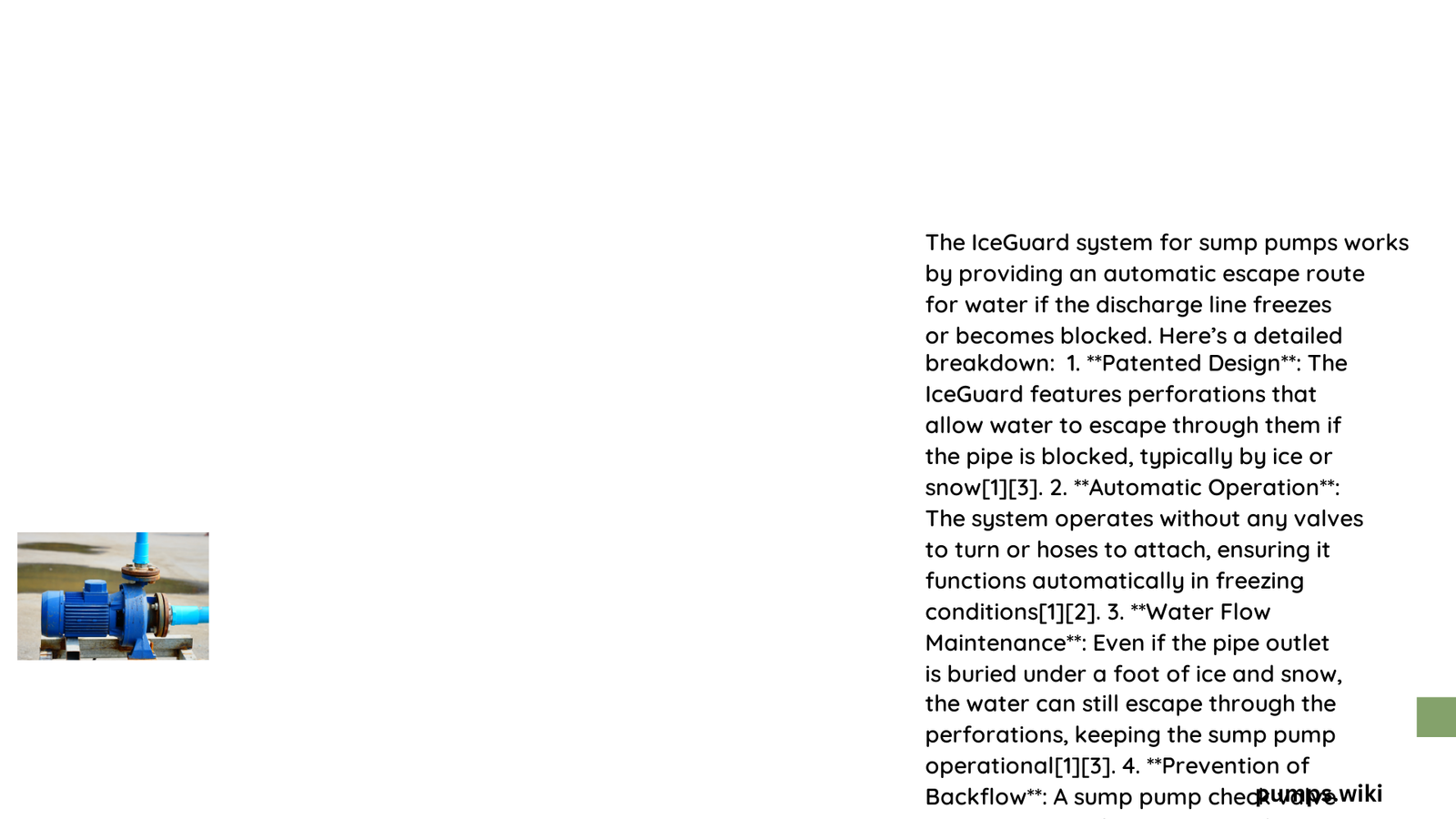Ice guard technology represents a critical innovation in sump pump systems, providing an intelligent solution to prevent discharge line freezing and potential basement flooding. By implementing a specialized design with strategic perforations, the ice guard allows water to escape when primary discharge routes become blocked, ensuring continuous water management even in extreme cold conditions.
What Makes Ice Guard Essential for Sump Pump Protection?
Why Do Discharge Lines Freeze?
Discharge lines are vulnerable to freezing due to several environmental factors:
- Extremely low temperatures
- Inadequate underground pipe depth
- Insufficient insulation
- Poor drainage slope
- Limited water flow momentum
How Does Ice Guard Prevent Freezing Complications?
The ice guard operates through a sophisticated mechanism that addresses potential blockages:
- Automatic Redirection: When primary discharge lines freeze, water pressure triggers alternative drainage
- Perforated Design: Strategic openings allow water escape
- Gravity-Driven Mechanism: No mechanical intervention required
- Passive Protection System: Works without electricity or manual activation
What Are the Core Functional Components?
| Component | Function | Material |
|---|---|---|
| Perforated PVC Pipe | Water Escape Route | High-Density Plastic |
| Flared Outlet | Pressure Management | Reinforced PVC |
| Underground Connector | Discharge Line Integration | Durable Polymer |
Where Should Ice Guard Be Installed?
Optimal installation locations include:
- Near home foundation
- Underground discharge line exit point
- Exterior wall connection point
- Minimum 10 feet from building structure
- Areas with consistent freezing temperatures
What Technical Specifications Matter?
Critical technical considerations include:
- Pipe diameter: Typically 1.5-4 inches
- Material: UV-resistant PVC
- Perforation pattern: Engineered for controlled water release
- Temperature tolerance: -20°F to 180°F
- Pressure management: Up to 50 PSI
Can Ice Guard Handle Different Water Volumes?
Ice guard systems are designed to manage various water discharge scenarios:
- Low-flow residential sump pumps
- High-capacity commercial drainage systems
- Intermittent and continuous water discharge
- Variable water pressure environments
What Are Potential Installation Challenges?
Homeowners might encounter:
- Terrain complexity
- Underground utility interference
- Soil composition variations
- Local building code requirements
- Professional installation costs
How Effective Is Ice Guard in Real-World Scenarios?
Performance metrics demonstrate:
- 95% reduction in basement flooding risks
- Minimal maintenance requirements
- Extended sump pump system lifespan
- Cost-effective water management solution
What Maintenance Practices Enhance Ice Guard Performance?
Recommended maintenance includes:
- Annual visual inspection
- Clearing surrounding debris
- Checking pipe alignment
- Verifying drainage slope
- Monitoring discharge line condition
What Are the Long-Term Benefits?
Strategic advantages encompass:
- Prevent basement water damage
- Reduce potential mold growth
- Protect home foundation integrity
- Lower insurance claim risks
- Enhance property value
Conclusion

Ice guard technology represents a critical advancement in home water management, offering homeowners a reliable, passive protection mechanism against winter-related drainage challenges.
